13 Mistakes You Need To Avoid When Baking Biscuits
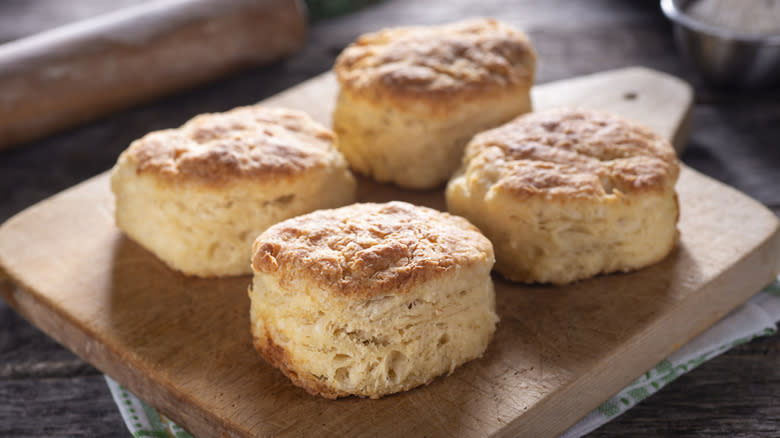
We may receive a commission on purchases made from links.
When you think about traditional Southern cuisine, one food immediately comes to mind: biscuits. Almost every barbecue, almost every Thanksgiving dinner, and almost every gravy all come with a nice, big pan (or three) of buttermilk biscuits to go with it.
There is a reason that biscuits are so popular: They are not just delicious, they are also easy to make. All you need are a few common ingredients like butter, flour, baking powder, buttermilk, salt, and maybe a bit of sugar, and you can whip up a pan faster than you can say "What's for dinner?"
Unfortunately, as easy as they are to make, biscuits are also very easy to mess up. Just one small misstep can turn your light, airy quick bread masterpiece into something more akin to a rock.
This Southern girl has made her fair share of biscuits in her time -- and has learned from her fair share of mistakes. If you want to avoid eating hockey pucks at your next cookout, there are a few things you should try to avoid.
Read more: Cake Hacks Every Baker Will Wish They Knew Sooner
Mistake: Buying The Wrong Flour
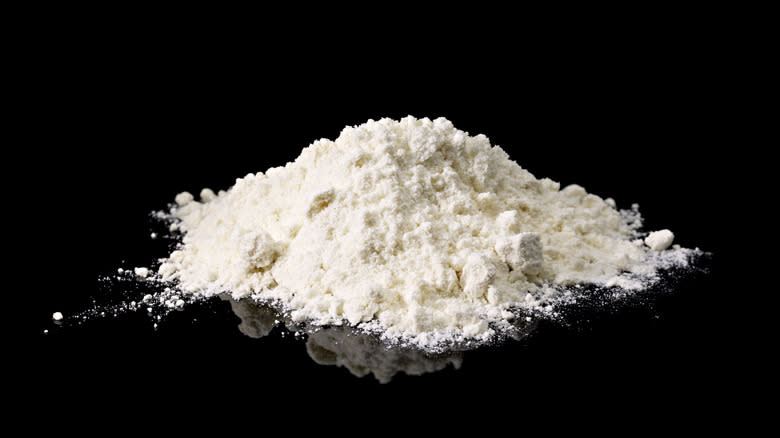
Let's be real: Most of us just use all-purpose flour for everything. Why go to the trouble of buying a bunch of different types of flour when one type can do the job of all of them?
While this is a compelling argument, it may be getting in the way of your biscuit perfection. All-purpose flour will make biscuits that taste alright, but if you really want to make the best biscuits in town, you should use a lighter flour, such as one made with soft red winter (SRW) wheat. This type of flour contains less gluten and protein, which helps your biscuits grow nice and fluffy in the oven.
Many biscuit-making experts swear by White Lily brand flour, but if you don't see that on the shelf of your local grocery store, you can mix together some of your all-purpose flour with some cake flour, the latter of which is much with a lower level of protein. The ratio should be equal, so if your recipe calls for 2 cups of flour, use 1 cup of all-purpose and 1 cup of cake flour.
Mistake: Thinking Butter Is Your Only Option For Fat
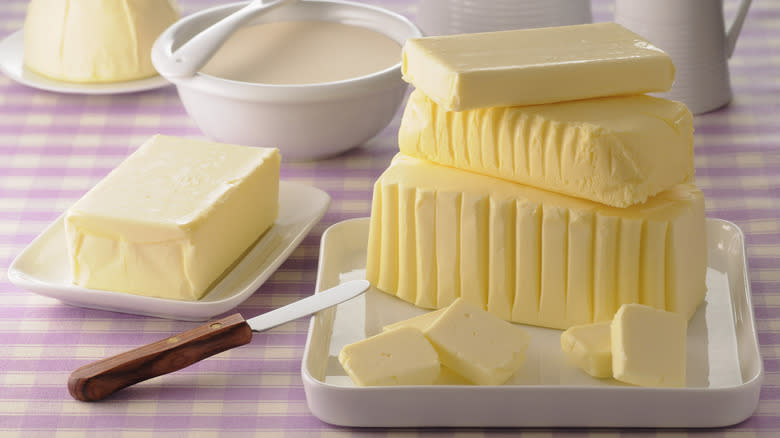
Fat is the most important ingredient in biscuits. According to the Journal of Food Science and Technology, fat serves the important function of acting as a shortening in baked goods. Shortening, in layman's terms, is a fat that is solid at room temperature. Its job is to change the makeup of other ingredients in the dough by "shortening" their chemical structure, which involves weakening or lubricating them.
This is the type of fat that is necessary to give biscuits their airy lift. So, unlike with some cake and muffin recipes, you can't swap in vegetable or olive oil for biscuits because they are a liquid and don't work in the same way.
Most Southern cooks will tell you that butter is your best choice when it comes to fat for your biscuits, but if you don't have it (or don't have enough) you can still whip up a fantastic batch with lard or another type of shortening like Crisco (which is clearly labeled as shortening, unlike lard). You can also use a mixture of any two of these ingredients, keeping in mind a one-to-one ratio -- and that it should be kept cold until it goes into the oven.
Mistake: Skipping The Buttermilk (Or Just Using Regular Milk)
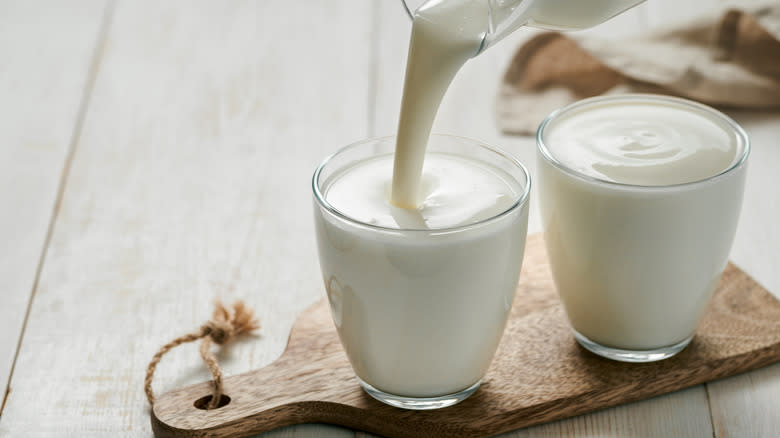
Even though it might seem like buttermilk is just a different flavor of milk, it is actually very different and serves a different purpose in baked goods. Unlike regular milk, buttermilk is acidic. The acid it contains reacts with the leavening agent in the dough (which, in the case of biscuits, is baking powder), and makes your biscuits rise.
Milk does not have this property, so swapping out the buttermilk or omitting it completely will result in some flat, unappealing biscuits. They would also be missing out on that light, trademark tang most biscuits are known for.
But what happens if you suddenly need to make a batch of biscuits and don't have a can of buttermilk in the cabinet? That's easy! You can use regular cow's milk and turn it into buttermilk by adding one simple ingredient... which, you may be surprised to learn, is not butter.
Contrary to what the name implies, the other ingredient you can add to create buttermilk is vinegar. Just add 1 tablespoon of white vinegar to 1 cup of milk, mix well, and let it sit for around five to 10 minutes. This makes it curdle slightly, which is a good thing. Then, voila! You've got buttermilk.
Here's another tip: If you're out of vinegar too, you can swap in lemon juice for the vinegar in the same quantity.
Mistake: Using Warm Butter (Or Other Ingredients)
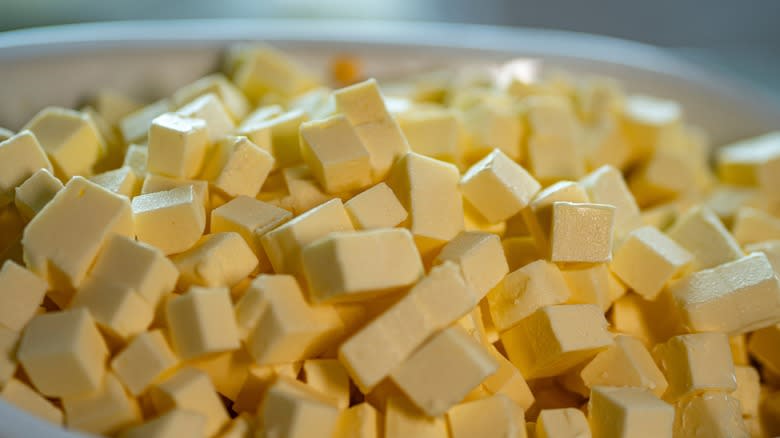
One of the biggest mistakes in biscuit-making is using butter that is too warm. Some recipes for other bread-like treats may call for softened or even melted butter, but if you use that in your biscuit dough, your biscuits are doomed. It's that serious.
Cold butter is necessary because the pieces of butter must be suspended in the dough. This creates little pockets of steam as they melt. Without those little pockets of steam, your biscuits will be missing that nice flakiness that a good biscuit should have.
In fact, keeping the butter cold is such a big deal that it is also recommended to keep the flour and buttermilk cold too. Some chefs even put their bowl and mixing spoon/fork in the fridge for a while to keep anything from warming up the butter!
As you will quickly find out, however, working with cold butter is really difficult. It is tough to incorporate into the dough because it is hard to keep it from clumping up and sticking together. Some expert biscuit bakers have a trick, though: Freeze your butter until it is very hard, then grate it with a cheese grater. The pieces will then be the perfect size to mix into the dough.
Mistake: Over- Or Under-Mixing The Dough
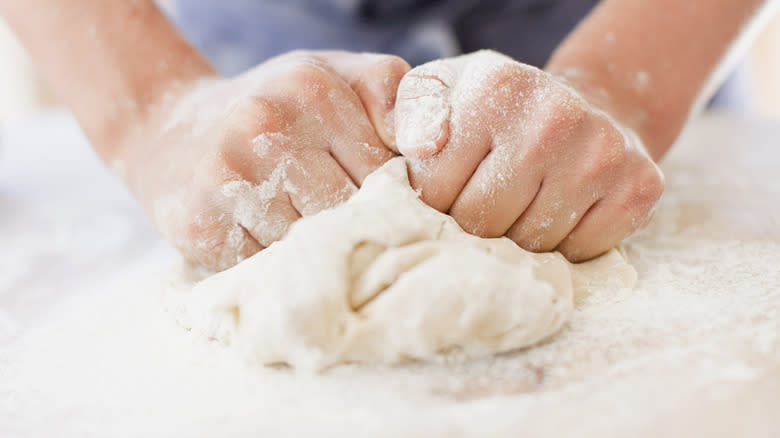
If you are a fan of cookies and cakes, you might be used to mixing the dough until everything is so well combined that you can no longer see the individual ingredients anymore. And for those cookies and cakes, this is perfect. Biscuit dough, though, is a bit more finicky.
If you mix biscuit dough too much, it causes friction, which heats up the ingredients. For biscuits, you should still see little chunks of butter when it is mixed, unlike with other baked goods that need a smoother batter. The butter needs to stay cold until it hits the oven, otherwise, the chemical reactions that need to take place won't happen and the resulting biscuits will be neither flaky nor fluffy. Over-mixing also causes gluten to form in the dough, which makes the biscuits less tender.
To make things more complicated, under-mixing the dough can be just as problematic as over-mixing it. Not mixing the dough enough leads to those pieces of butter getting jumbled up together in some spots while other spots are just flour or chunks of baking powder. This unevenness in the dough will cause unevenness in the baked biscuits and lead to some wonky, not-very-tasty bread.
So, how do you know if your biscuit dough is the right consistency? If it looks coarse and mealy with pieces of butter evenly dispersed throughout, you're on the right track.
Mistake: Not Using The Right Mixing Tool
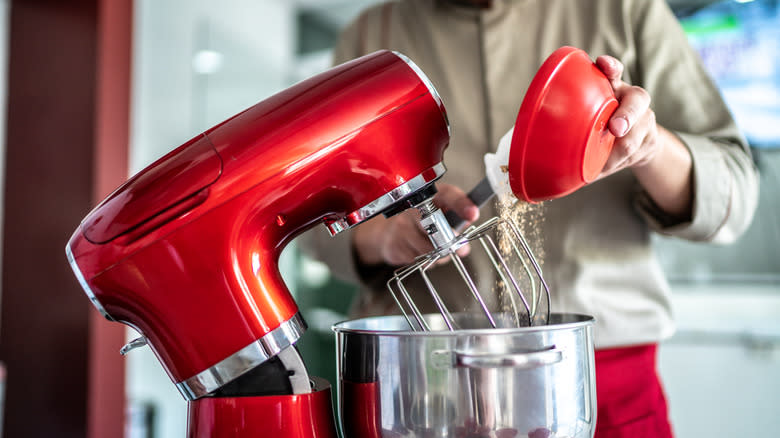
Many modern chefs have a kitchen full of cool and useful appliances to make cooking easier. The problem is, biscuits are not a modern dish. They are something our great-great-great grandmothers used to make, and the recipe and its requirements have not changed much since then.
If you use a handheld or stand mixer to mix up your biscuit dough, this leads to over-mixing, which can lead to disaster. It might save you some time, but it won't save your biscuits.
Instead, it is better to use a fork to mix the dough, or even two knives pulled in opposite directions to break the butter pieces apart and spread them. Even better than that is using your hands to mix everything together. Biscuits call for a gentle touch, not harsh mixing, and using your hands is the best way to control the process. Just keep in mind, though, that your hands may also be warm, so don't mix the dough for too long or you will prematurely melt the butter just like the mixer.
Mistake: Not Folding The Dough To Get Flaky Layers
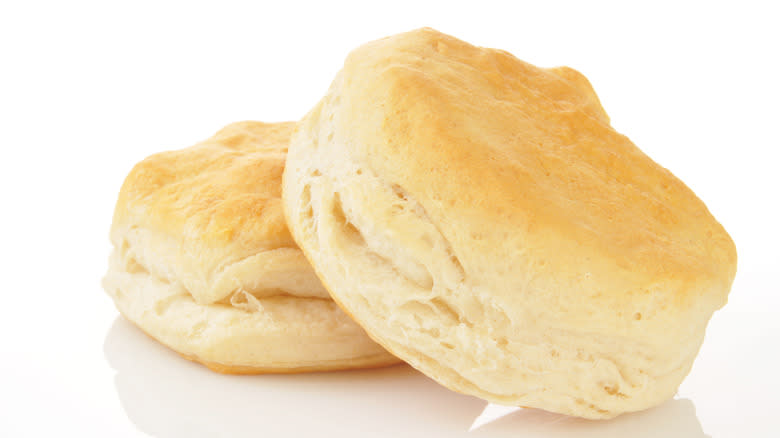
You know those Pillsbury Grands! canned biscuits that are known for all their buttery, flaky layers? You may think that this is something only that cheeky little Doughboy can make, but you'd be wrong. Your biscuits can have plenty of flaky layers all on their own without the help of pre-made dough.
Usually, your instinct would be to roll out your dough once on a floured surface before cutting out your biscuits. And this is fine! But if you really want those layers, you have to do some folding.
One way to do this is to fold a rectangle of patted-but-unrolled dough into a smaller, thinner rectangle just like you would fold a letter you are going to put in an envelope. In other words, fold one-third into the middle, then the other third over the top of the first two-thirds. To make more layers, you can do this up to two more times (but no more than that), turning the dough 90 degrees each time. Then, roll out the dough as normal, cut out the biscuits, and you're on your way to a great, flaky snack that will make that Pillsbury Doughboy green with envy.
Mistake: Twisting The Cutter When Cutting Out Your Biscuits
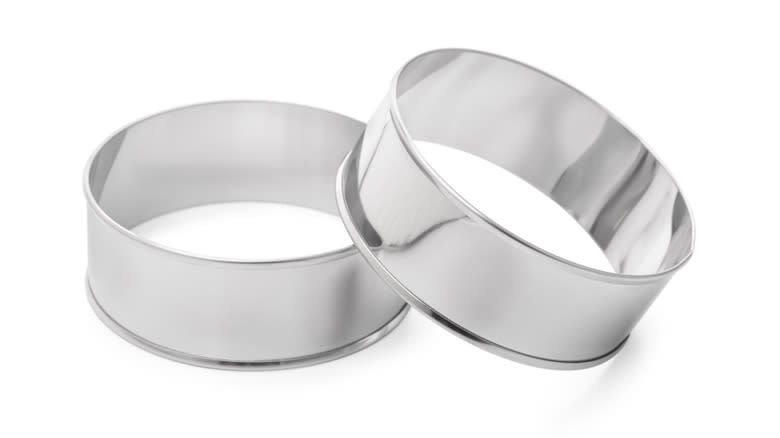
There's something really satisfying about cutting out a cookie or biscuit with a cookie cutter. It's fun to press down the cutter and really give it a good twist to break that one disk free from the rest of the dough.
Sadly, that twisting is actually a mistake. Yes, it does help to really cut out that circle well, but it also seals down the edges of the biscuit. This, in turn, stifles its ability to rise in the oven, so even if all of your ingredients are mixed correctly, your biscuits will always remain flatter than they should be.
So, what's a baker to do? It's simple: Just press down the biscuit cutter. Press until you feel it make contact with the surface underneath, and this should be all it takes to cut out the circle. There's no need for the extra flourish of twisting. When it comes to cutters, you can use your classic round biscuit or cookie cutter, the open end of a round glass, or just about any other rounded kitchen object that has a thin enough edge to cut the dough.
Many biscuit recipes don't even require a biscuit cutter. Instead, you can just drop the dough in large dollops onto the baking sheet. The resulting biscuits are more "rustic" than the rounded ones, but they are equally as tasty and quicker to make, so they're great when you're short on time.
Mistake: Rolling The Dough Too Thick Or Too Thin
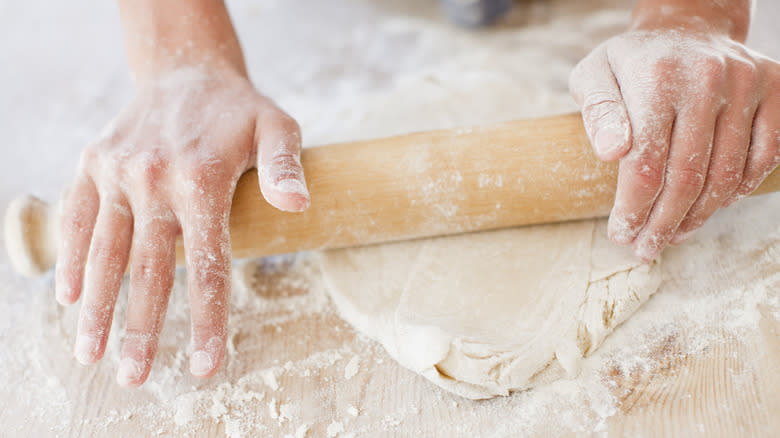
This is a mistake that is made all too often, and not just with biscuits. Many a tray of cookies has been ruined by rolling the dough out too thick or too thin (or a combination of both in one batch, which might be even worse). When we're talking about biscuits, rolling the dough out too thin will make for some short, shrunken biscuits that will most likely come out burnt. If you roll the dough out too thick, however, you will have a whole other type of problem: The biscuits may look taller, but they will also most likely be raw in the middle when you take them out of the oven. Then, even if you put them back in, they will likely get browned on the outside, but that interior part will just never be quite right.
The recommended thickness for biscuit dough depends on the recipe and on how many layers you are creating, but typically it is between 3/4 inch and 1 inch. So if you stick with that (and avoid making the other mistakes on this list), your biscuits should turn out just fine.
Mistake: Using Too Much Extra Flour To Roll Out Dough
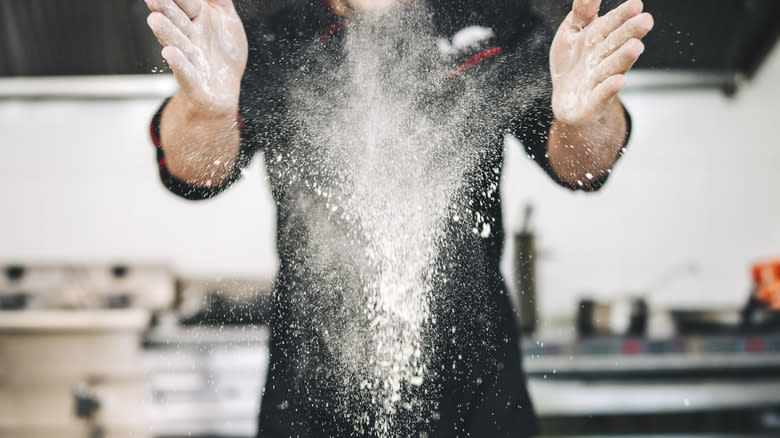
If you read your biscuit recipe closely, you will most likely notice that it tells you to "roll the dough out on a lightly floured surface." The key word here is "lightly."
The flour you put on your countertop or other rolling surface gets absorbed by the dough as you work it and roll it out with your rolling pin, and this is not flour that was originally part of the recipe. While it is one of the essential ingredients in biscuits, adding too much will make them dry and flaky -- and not the good kind of flaky.
This is not to say that you should roll your dough out with no flour, however. You need some to ensure that your dough doesn't stick to either the surface or the rolling pin, but go easy. Add more only if your dough is really getting stuck; otherwise, just treat the flour as a non-stick agent, not as another ingredient to be added to the dough.
Mistake: Not Using Parchment Paper
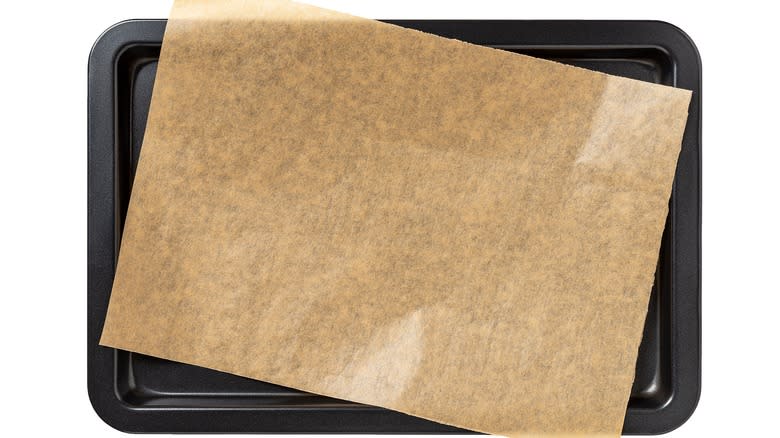
For anyone who has ever ruined a pan (even a supposedly non-stick pan... grrr) by getting their baked goods stuck on or in it, parchment paper is a gift from the heavens. This cellulose-based baking paper is made to be resistant to humidity and grease, and to be a perfectly and reliably non-stick surface every time.
If you don't have parchment paper to use when baking biscuits, get some. Like, right now. Placing biscuits directly onto the baking sheet often leads to them getting stuck as they cook, which leads to the bottoms getting pulled off when you try to take them off. Greasing the pan may avoid this problem, but oftentimes it is not enough.
So, save your biscuits and your mental health (really, trying to scrape biscuits off of a hot pan is no fun) and use parchment paper. This will also keep the bottoms from getting burnt or cooking too fast, which is an added bonus.
Mistake: The Oven Isn't Hot Enough
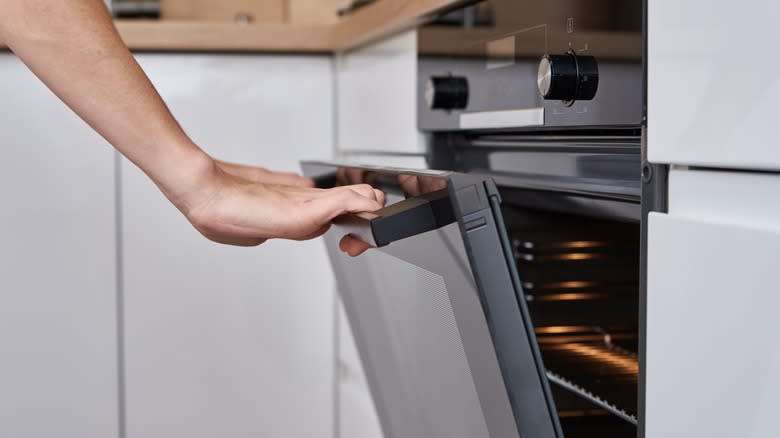
As is the case for many baked goods, a preheated oven is essential to making good biscuits. This is because biscuits need steam to take them to even higher heights than the chemical leavening agents inside are meant to do. This steam is produced when the cold butter in the dough melts quickly, creating a vapor that makes the dough rise.
Your oven should be set to a high temperature at the start: 425 degrees F. It needs to remain at this steady temperature for around 10 minutes before putting the biscuits in the oven so that the moisture in the butter, as well as the moisture from the buttermilk, can turn to gas and kick things off.
If you start your oven at a lower temperature as you would for a cake or cookies, your biscuits most likely won't rise very much and won't get that oh-so-desirable golden crust on the outside.
Mistake: Forgetting To Top Your Biscuits Off With Melted Butter
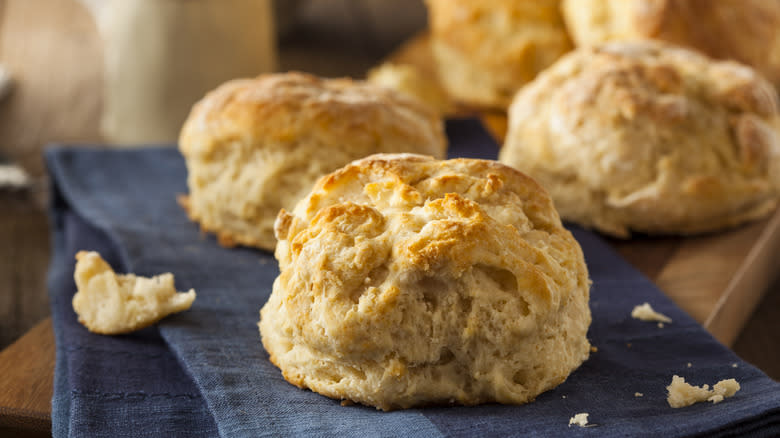
Okay, this one is not an unforgivable sin. But trust us, once you've tried this serving tip, you'll never go back.
Assuming you kept your butter cold, didn't over- or under-mix the dough, didn't roll the dough too thick or too thin, and remembered to fold the dough to make layers, your biscuits should be big, beautiful, and ready to go as soon as they come out of the oven. They will work magnificently as a side dish to fried chicken or barbecue chicken, smothered with gravy, or even used as the bread for a sausage and egg biscuit. Some Southerners even eat them with warm with peanut butter and jelly -- a real treat.
But, if you want the biscuits to be just as delicious on their own as they are in the company of other foods, you should brush some melted butter over the top of them as soon as they come out of the oven. This makes your already-buttery creation even more irresistible -- so maybe have a second batch ready, just in case.
Read the original article on Daily Meal.

